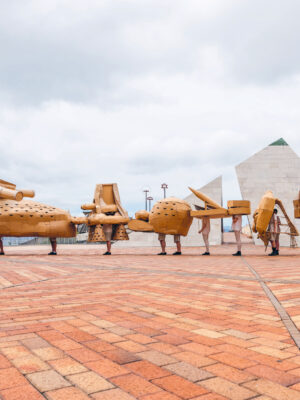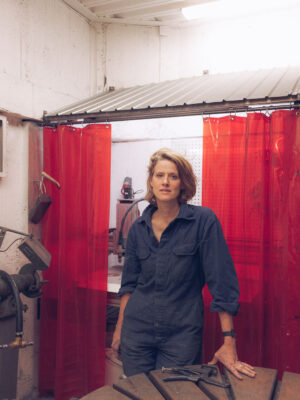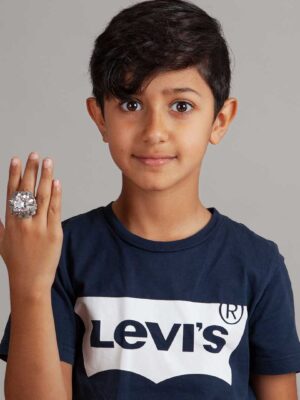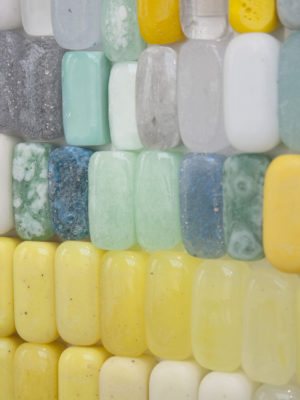“Wearing Space: Body and Site”, is an open seminar hosted by two brilliant teaching artists, Yuka Oyama, and Anders Ljungberg, (from HDK Valand, and Konstfack, respectively) in which they explore the relationships between jewellery, the body and place. Aside from presenting their own work, Oyama and Ljungberg will be joined by selected students from both MA cohorts: Elena Aldrighetti, Jodie De Verney, Lovisa Hed, and Shiyao Sun, and speaking guests Dr. Patricia Domingues and Dr. Vivi Touloumidi, casting a light on the creative processes of making jewellery, in the context of place. We caught up with them briefly to hear more about what to expect from this special event and how their own research is reflected in these themes.
Margaret Munchheimer: We love the idea of an open seminar that features students, professors and researchers in dialogue. Can you tell us a bit more about this project and how it came together?
Yuka Oyama: As educators responsible for teaching jewellery art at the master’s level, Anders and I have the true privilege of gaining insights into the wide range of topics that students explore. Issues that matter and fascinate them stem from the multifarious backgrounds they come from, current social events they deem important, and ungraspable thoughts that catch their attention. These original aspirations are then carefully investigated with jewellers’ perspectives, technical expertise, and material knowledge. Over time, we can draw a map of what kind of questions tend to be explored through jewellery, but we realised that there is a need for a space to discuss how jewellers explore, search, test, and engage with the subject matter that reflects our time. This is the reason we are implementing this social club.
Anders Ljungberg: To my mind, in the discussion about jewellery there has been too much focus on jewellery as an object for galleries and collectors rather than focusing on jewellery as a method. In this open seminar we want to focus on jewellery specifically as a method to connect the body to site and matter. Something that has been there since the first shell was picked up and connected to the body with a string. In a constantly ongoing flow, our bodies interact with materials and things which make us part of a larger story about materials, things and doings. In the rationalised view of things and materials, characterised by a functionalist mindset, they have become something that is there only to serve us, and solve practical problems. In a post-industrial and consumerist-oriented world, much of our understanding of how our bodies link to the materials and their origins has disappeared. A gap has grown, which means that we do not understand our bodies as a part of the larger material story. By focusing on questions around distinctions and connections between space, body, material and place, we can reflect upon something that is often overlooked in the everyday noise of things and materials, where they exist to a greater extent to be consumed than to be connected with on a deeper level. Starting from the potential of craft, we can slowly begin to overbuild the gap that has arisen in the traces of exploitation and rationalisation in relation to (what we refer to as) nature, and all the materials that, in dialogue with each other, already create conditions for each other’s being. Perhaps there can also be a place for humans in this dialogue. We just have to find the language. Perhaps crafts can offer elements of such a language.
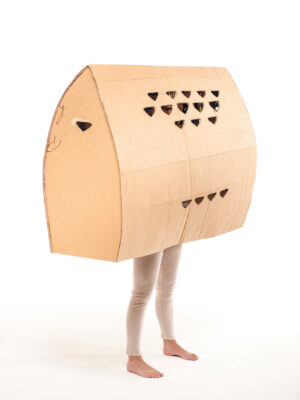
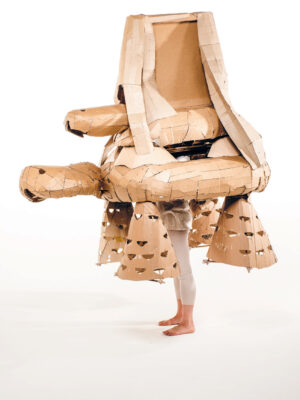
MM: What aspects of jewellery can we expect to contemplate when discussing its relationship to place? And how have you both worked with these themes of body and site in your own work?
YO: There are motions associated with jewellery. Makers of jewellery navigate through domains of their everyday. Once worn, jewellery pieces also manoeuvre beyond display cases, gaining mobility through individuals—makers, wearers, viewers, dealers, collectors. Human bodies are also perceived as landscapes that offer space for jewellery to be worn and attract the attention of others. Through jewellery, the wearer’s internal dimension can be projected which creates both physical and mental space as well as closeness, and distance between the wearer and the viewers.
In my own work, I investigate a personal geography that is non-location bound. For some people, places where everyday life unfolds change regularly. My interest in this topic stems from my upbringing as a third culture child, growing up in four different countries, later reflecting on the widespread physical as well as cultural geographies of my past, asking myself: “Where could I belong?”
In my art practice, I have often explored specific themes in conversation with people who are experts on those subjects, creating wearable sculptures inspired by their narratives. I then bring my conversation partners together to create a theatrical performance, in which they wear and enact the sculptures, re-telling our stories by crafting a surreal reality, and forming a temporary community among unexpected combinations of individuals. Today, I turn performances back into jewellery pieces to remember. In “Power of Small Things,” (2017-2023) I investigated strategies that individuals develop to cope with constant geographical changes in living situations. Three collaborations involved individuals who had moved more than thirty times across various countries; individuals with multiple home locations due to their professions; and children living between two households. I discovered that jewellery and small personal possessions carry memories of significant life events, and moreover, that specific body motions and activities facilitated by these small items, help individuals establish a sense of anchor and stability. I will expand on these findings during my brief presentation at the social club.
___STEADY_PAYWALL___
AL: I also see a shift from letting the material tell the story about a specific site, (say, with Schmuck Quickies) and site specific materials in dialogue with individual bodies, (Encapsulation Suits). My question is what role materials play in your work today as compared to earlier work as a method to connect?
YO: In my earlier works like Schmuck Quickies (2002-2012), I used discarded everyday objects as materials for my artworks. I deliberately ignored their intended use, focusing mainly on their visual properties to translate the wishes of wearers (participants). For example, I attached a badminton racket to a man’s shirt with blue tape at his request to look excessive. Starting from Encapsulation Suits (2013), I began using materials to articulate and reinforce the ideas I wanted to express. I chose a flexible, soft, and porous sponge material, as it resembled human skin. The dark, hollow appearance also allowed me to convey mysterious and mythical qualities associated with the imagined internal life forces of personal possessions. In Helpers Changing Homes (2018), I used cardboard boxes, since the work was about moving. In SurvivalBall Home Suits (2022), I wanted to connect the air of two homes that children were shifting between. So, I chose transparent balloon material to contain the air.
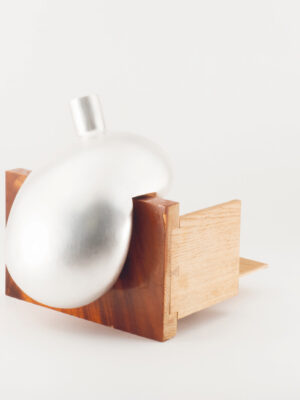
AL: Another central perspective I see in your work is the possibility to connect to site through everyday objects. In your experience, what are the possibilities, or perhaps dilemmas, of using everyday functional items as a way to discuss connections to the everyday, particularly when the consumer or commercial understanding of those objects might have taken over our perception of them?
YO: I question how many items we really need to own to maintain everyday life. This is my own critical reaction towards consumerism and the state of life oversaturated with goods. I start by asking people their two to five most essential must-haves. Then, I ask why. I am intrigued by personal possessions with no specific utility purposes, like stones, souvenirs, and more. Behind these attachments, there are quite individualistic and unique reasons that only make sense to the owners.
A gap has grown, which means that we do not understand our bodies as a part of the larger material story.
YO: When I look at how body, space, place, and site, revolve around your work, the first thought that arises is anthropomorphism. You imbue functional (domestic) objects such as jugs, teapots, and vessels—items that occupy tables—with human traits and imagined lives. They gain body and become characters with a will of their own. You are trying to break the hierarchy of things derived from their use and in doing so, create new constellations and orders among the thing-actors. For example, your vessel, “Exteriorized” (2015), shows how your work depicts the emotional presence of things, defying their actual sizes in the physical dimension and extracting functions from them.
I am convinced that your work pulls your viewers out of an operative mindset and guides them into the mode of active imagination. What kind of a life ideology do you imagine you are instilling in the lives of your viewers through your artworks? Do you imagine shifting their focus from being viewers to becoming users?
AL: The starting point of my work is to consider this idea of “constantly becoming” with the work, in everyday life. This interest began with becoming a father 25 years ago, and realising a table is not only there to serve us in a practical sense to “put things on”. When again seeing this table through the eyes of my children I was offered an opportunity to “re-see” the table with its full potential in space and in relationship with other bodies. (The table very much became a “body in dialogue”.) In the sensational experience of understanding the table more as a possibility to crawl in under and to make into a shelter to hide in, I realised how everyday habitual and rationalised ways to understand functional objects is influenced by modernist and consumerist ways to define functionality. This sensation brought me further into looking at all functional items and the magical potential they offered us to understand material, body and site in a far more dynamic dialogue.
The more I have worked with those questions the more I refuse to understand, for example, a specific chair as one singular object, meaning only one thing. The meaning of this chair shifts depending on who uses it (body size, experience, cultural preferences etc.) and how it is placed in relation to space and other objects. All objects and materials are in a constant flow activated by the interaction with our bodies. I also refuse to accept this way of defining the relation between objects and bodies as something fixed. This is the potential, privilege and responsibility an artist has.
To the second part of your question, in my own work I introduce the possibility of putting objects into use, through pouring and other actions of use, as a way to bring them away from being only viewed (as is often the case in a fine art, sculptural tradition). This is not only shifting the meaning of objects through the series of actions of using them, but also offering our bodies the sensation of being a part of this shift. For me this is a way of uncovering layers of meaning both in object and body.
To the second part of your question, in my own work I introduce the possibility of putting objects into use, through pouring and other actions of use, as a way to bring them away from being only viewed (as is often the case in a fine art, sculptural tradition). This is not only shifting the meaning of objects through the series of actions of using them, but also offering our bodies the sensation of being a part of this shift. For me this is a way of uncovering layers of meaning both in object and body.
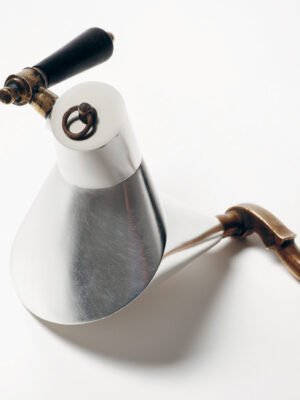
YO: And how much of those subsequent actions are you devising for the viewers/users?
AL: Because there is always an interest in how my object can be understood by another body (and perhaps mind) than the one making them (mine), I always try to find formats for dialogue with an audience in my exhibitions as a part of my artistic research, and have also made interviews based on objects chosen by the respondent, from which I have later made objects, and then brought those objects back into dialogue with the same person. An example of this is the series Handled (Jugs with pre-used handles).
YO: Do you present your artworks in domestic settings, specifically at home? In terms of taking up domestic space—the internal space—do you think that being specific about a site would reduce the poetic power of your work?
AL: One way for me to relate to my work and the poetic potential of it has been to contextualise it in the white cube setting. Precisely to highlight the performative and perhaps poetic aspects by separating it from the domestic, and the specific bodies existing there. As a way to draw aside the blanket of habitual life that might hide those poetic and magic qualities I am looking for in my work. Although lately I have been thinking more about other methods to meet bodies beyond both the white cube and the domestic. In this, I find your work, Yuka, is very inspiring since I would say this is very much what you do in your performances.
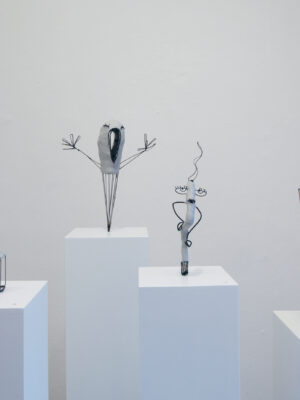
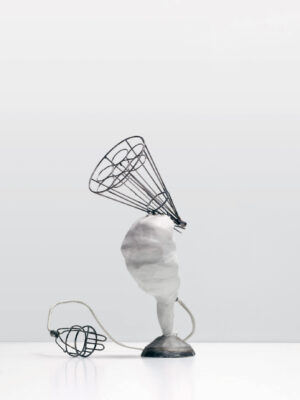
AL: Given that performance is one of your main working methods, I wonder, what role would you say the performativity of the everyday object itself plays in your work; how does that guide you when making your performances?
YO: In Encapsulation Suits, I explored why some of my personal belongings feel emotionally powerful, as if they have their own lives. They were a bundle of keys, a bag of flour, a cap, a piano, and a handbag. I wanted to physically sense their internal life forces, so I made these items as large as my body, which allowed me to enter into them and become them. Whilst dwelling inside of these things, I imagined my daily interactions with these objects. I thought of their object biography and materiality. I also tried to identify motions, where the sculpture and I appeared to fuse into a hybrid thing-person entity.
The choreographic experimentations that I mentioned before uncovered the “surplus of perceptions” described by German ethnologist, Prof. Dr. Hans Peter Hahn, [suggesting that] objects become co-actors of our lives, as we use them for various actions. So, in other words, we remember instances paired up with the objects; even if we forget some events, the objects retain the memories. Furthermore, objects occasionally surprise us by reminding us of forgotten events and offering different perspectives on everyday life. I am particularly interested in cognitive and anthropological archeologist, Prof. Lambros Malafouris’ exploration of how to recall forgotten memories by reenacting physical interactions with objects.
AL: There is a possibility to “enter” your work which could refer both to costumes and jewellery. What is the main difference in your work between jewellery and costume and how do you use that?
YO: Because of their scale, my wearable sculptures are really like rooms that wearers can enter and dwell inside. Through entering these spaces, the wearer’s physical body expands, and body motions become clumsier. Despite the darkness, tightness, and silence within, the person wearing the sculpture appears humorous to onlookers. There is a duality in this. A person’s internal hardships and life struggles may even look slapstick from the outside.
I certainly hope my jewellery would not make the wearers look ‘funny’, however, just as the sculptures expand the physical size of the wearers, I do want my jewellery to provide expansions in the sense of feeling stronger, more grounded, proud, and loved.
The open seminar, “Wearing Space: Body and Site” will facilitate conversations on how jewellery serves as a method for exploring the interweaving relationships between jewellery, site, and the body. The seminar will begin with brief presentations by moderators Yuka and Anders, followed by jewellery artists and researchers Dr. Patricia Domingues and Dr. Vivi Touloumidi, who will share their perspectives on how their own artistic practices intersect with the themes of wearing space, body, and site. Subsequently, all participants, including selected MA students from HDK-Valand and Konstfack: Elena Aldrighetti, Jodie De Verney, Lovisa Hed, and Shiyao Sun, will engage in open conversation, offering insights into the current projects the students are undertaking.
This interview is part of the Pulse series, highlighting the favourite Munich Jewellery Week selections of professionals in the field. For more Pulse articles by Jimena Rios, Lin Cheung and Oh My Blue Gallery, order the Munich Jewellery Week Paper 2024 now through our webshop.
Cover image: Yuka Oyama, HELPERS CHANGING HOMES (2018), performance view. Photograph: Alex Efimoff
